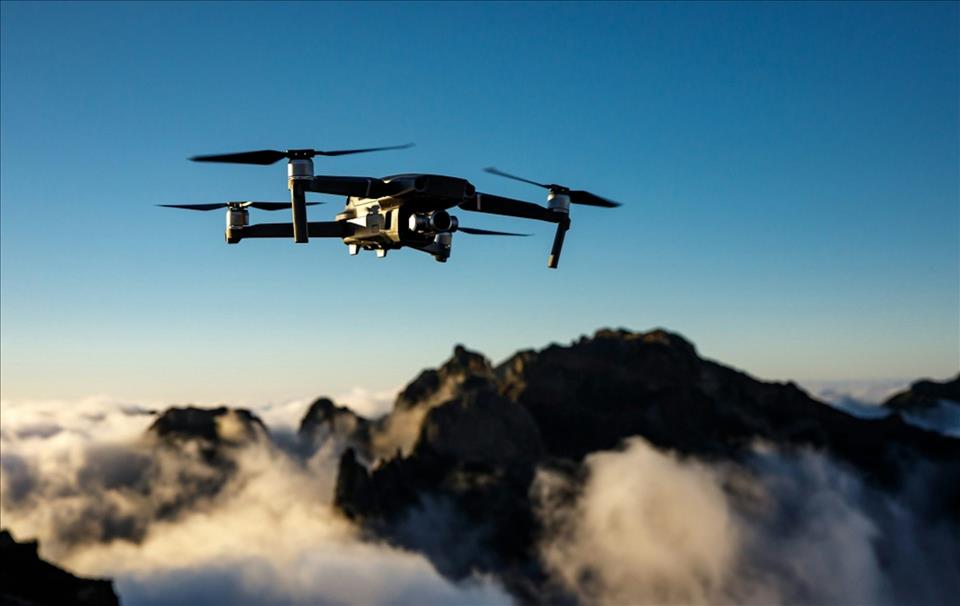The Eye In The Sky: What Denmark's Drone Sightings Tell Us About Power And Fear Down The Years
Drones have been sighted over airports and military bases all over Denmark. Air traffic has been delayed , politicians have gathered for crisis meetings , and Nato has been called on to act .
We speak about drones in our coffee breaks, exchanging newly acquired expert knowledge about flight heights and battery power. We talk to our children about “hybrid warfare” . And many of us walk around with a strange and eerie feeling that something in the sky is watching us.
Although Russia's role in the recent drone incidents remains unconfirmed, the sightings come against a backdrop of escalating tensions between the two countries, and just after Copenhagen announced it would acquire long-range precision weapons, drawing sharp threats from Moscow . Indeed, analysts have suggested the drone flyovers may form part of a wider Russian strategy to sow fear, test Nato's defences, and erode Danish support for Ukraine.
Read more: How can Europe fight back against incursions by drone aircraft?
That monstrous stareAs a professor of culture and technology, my research focuses on surveillance, drones and how we talk about war. In this sense, surveillance from above is a tale as old as time. Think of that godly“eye in the sky”, mentioned by the Old Egyptians and in the Bible. That celestial all-seeing entity with superhuman powers to decide whether you should live or die, much like the drone itself .
This connection is not only highlighted in popular culture, such as in the title of the 2015 film Eye in the Sky about military drone strikes, but also by the military industry itself.
There is, for example, a US military drone, Gorgon Stare , named after a monstrous figure from Greek mythology, most famously represented by the three sisters Stheno, Euryale and Medusa. The latter is known for turning anyone who looks at her into stone. The Gorgon Stare is equipped with many cameras and armed with Hellfire missiles.
Trailer for 2015 film, Eye in the Sky.
But it's not only the assumed drone's power of hypervision that gives us the creeps. It's also precisely its opposite feature: its invisibility. Although we might see some dots and shadows in the sky, the drone pilot stays invisible. Who steers this Unmanned Aerial Vehicle (UAV)? Who controls it – or does it even control itself? It is deeply rooted in our human instincts that when we feel observed by an invisible force, we feel alarm and our nervous system enters defence mode.
In this context, another Greek myth comes to mind: Gyges . The Greek philosopher Plato wrote about the shepherd Gyges, who discovered a magical ring that could make him invisible. Armed with this new power, Gyges became king and ruler over the country. Drones operate in a similar way to Gyges's strategy, as their pilots also remain hidden in the shadows.
Threatening skyHumans tend to thrive on eye contact . But drones are not about seeing each other. When it comes to fighting, there is no duel anymore. Drones do not announce themselves. They disregard international treaties, break laws of war, and fly under the radar.
The drone flyovers in Denmark expose our vulnerabilities and erode the sanctity of our airspace. Many have been left wondering if we are prepared for this new type of warfare. Nevertheless, within all this hype about drones, we have to remember that aerial reconnaissance has been around for centuries. Think of kites , hot air balloons and spy planes .

Who is controlling the drone in the sky above you? Gorodenkoff/Shutterstock
It's also important to point out that new technologies frequently spark public unease. The first cars were met with great anxiety and fear. Electricity was seen as something supernatural . These examples do not aim to normalise the high levels of drone activity we've seen over Denmark, or the feelings of fear and uncertainty these aerial vehicles have induced.
But by looking at how new technologies have been viewed historically, it opens up space for critical and nuanced dialogue about their societal implications and how we navigate their presence in our everyday lives.
The history of surveillance from above shows us that human unease with aerial reconnaissance is nothing new. But in today's climate of geopolitical tension, drones are more than symbols of technological change – they are markers of the fragile balance between visibility, power, and trust. And right now, that balance feels more precarious than ever.
This article was commissioned with Videnskab as part of a partnership between it and The Conversation. The Danish version of the article is here .

Legal Disclaimer:
MENAFN provides the
information “as is” without warranty of any kind. We do not accept
any responsibility or liability for the accuracy, content, images,
videos, licenses, completeness, legality, or reliability of the information
contained in this article. If you have any complaints or copyright
issues related to this article, kindly contact the provider above.
Most popular stories
Market Research

- Alt.Town Introduces $TOWN Token Utility Across Platform Services And Launches Valuefi Deposit Event
- BTCC Exchange Maintains 143% Total Reserve Ratio In September 2025 Demonstrating Continued Financial Strength
- Salvium Solves The Privacy Paradox: Salvium One Delivers Mica-Compliant Privacy That Exchanges Can List
- Zebu Live 2025 Welcomes Coinbase, Solana, And Other Leaders Together For UK's Biggest Web3 Summit
- Tapbit At TOKEN2049: Reshaping The Crypto Landscape Through Product Innovation
- Thrivestate Launches“Fly Before You Buy” Program, Enabling International Buyers To Explore Dubai Before Committing






















Comments
No comment